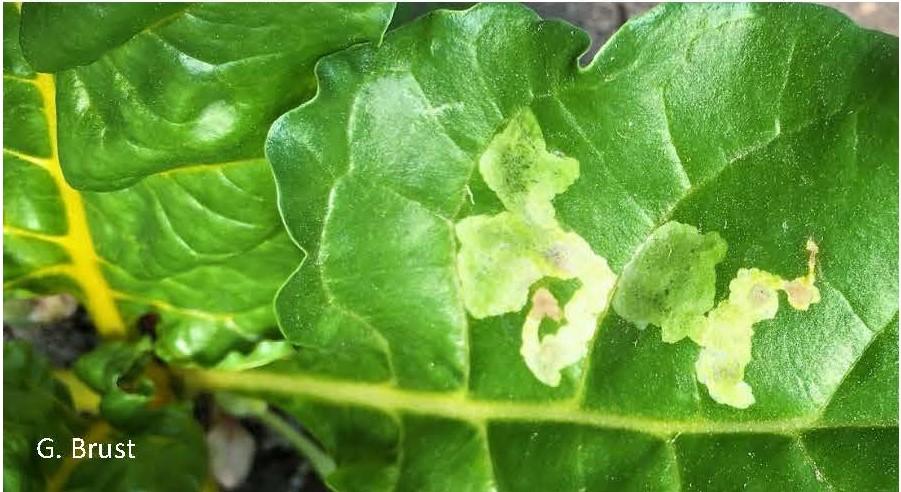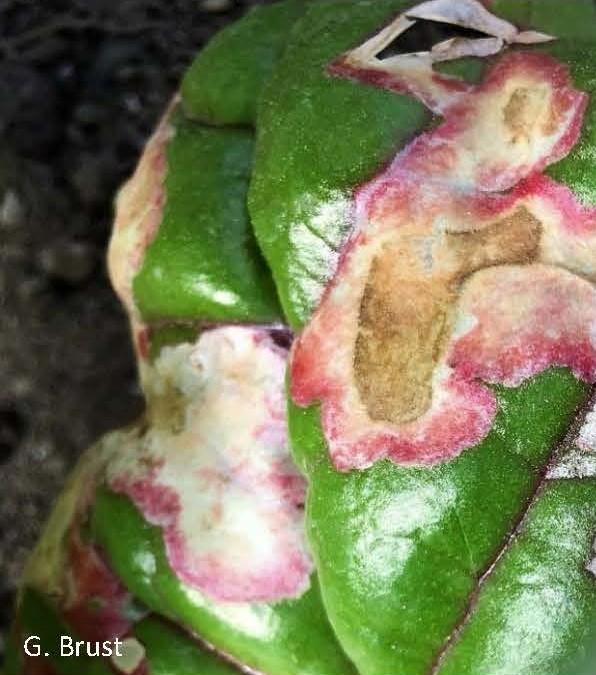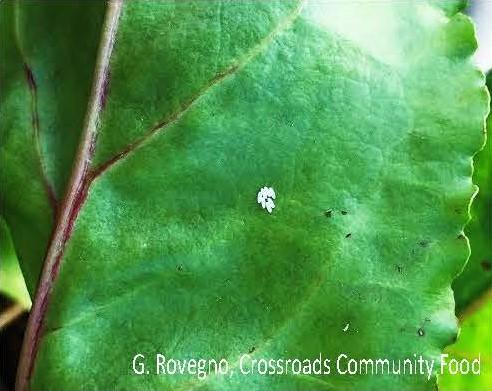Beet and Spinach Leafminers
In high tunnels and in the field, I have seen spinach and beet leaf miners Pegomya hyoscyami and P. betae respectively in swiss chard and spinach. These leafminers are a type of blotch leafminer, creating irregularly shaped mines. These flies attack crops and weeds in the plant family Chenopodiaceae, which includes chard, beets, and spinach and the weed lamb’s quarters. These fly species are very similar, but the spinach leafminer may also feed on Solanaceous crops such as peppers.


Adults are small flies about 1/3 inch in length and gray to brown. Larvae are whitish and cone-shaped. Flies of both species overwinter as pupae in the soil. In April and May, flies emerge and lay white eggs in groups of 4-8 on the underside of leaves (fig 1). Eggs hatch and larvae begin feeding between leaf tissues creating mines (fig. 2). As the larvae feed and develop, they create areas of dead tissue where they have fed. These areas are opaque at first and then later turn brown (fig. 3). Once inside the leaf tissue larvae are difficult to control. The larvae are active for about two to three weeks, before dropping to the ground and pupating in the soil. The entire life cycle is 30-40 days. There are three to four generations per season. Once the summer is over, leafminers will overwinter as a puparium in the soil emerging in early spring the next year to start the cycle again.
Leafminer feeding has little impact on overall plant growth but can be quite damaging to vegetables grown for edible greens. So, a crop such as Swiss chard or spinach that you are trying to sell the leaves of are greatly impacted while something such as turnips or beets that you are selling the bulbs of are less impacted (unless you are selling the tops too).
The damage to the Swiss chard and spinach I saw probably could have been far less if the first infested leaves with leafminers or fly eggs had been removed or destroyed. Any additional plantings of spinach or chard this season (or next year) on this farm should be planted in a different area of the field because of pupae still in the soil. Once the spinach or chard is planted in a new area a row cover or chemicals can be used to protect the plants and keep the leafminer flies that emerged from previously infested sites from laying eggs.
Because these leafminers feed mostly on one crop group and some weeds that include chickweed, pigweed and lamb’s quarters, weed control and crop rotation are important management tools. Chemical controls such as dinotefuran, thiamethoxam and spinetoram (spinetoram also has translaminar activity and if combined with an adjuvant is more effective against larvae) are foliar and soil controls for use in spinach. Chemical controls for leaf miners in other crops are more limited, so check the 2022/2023 Mid-Atlantic Commercial Vegetable Production Recommendation guide (pdf) and always follow label instructions. For organic production spinosad can provide good control if used at or before egg laying and has only minor impacts on natural enemies. Neem oil can be used to prevent egg laying but is not as effective as spinosad. As always thorough coverage is necessary for good control which includes getting the material to the underside of the leaf.
